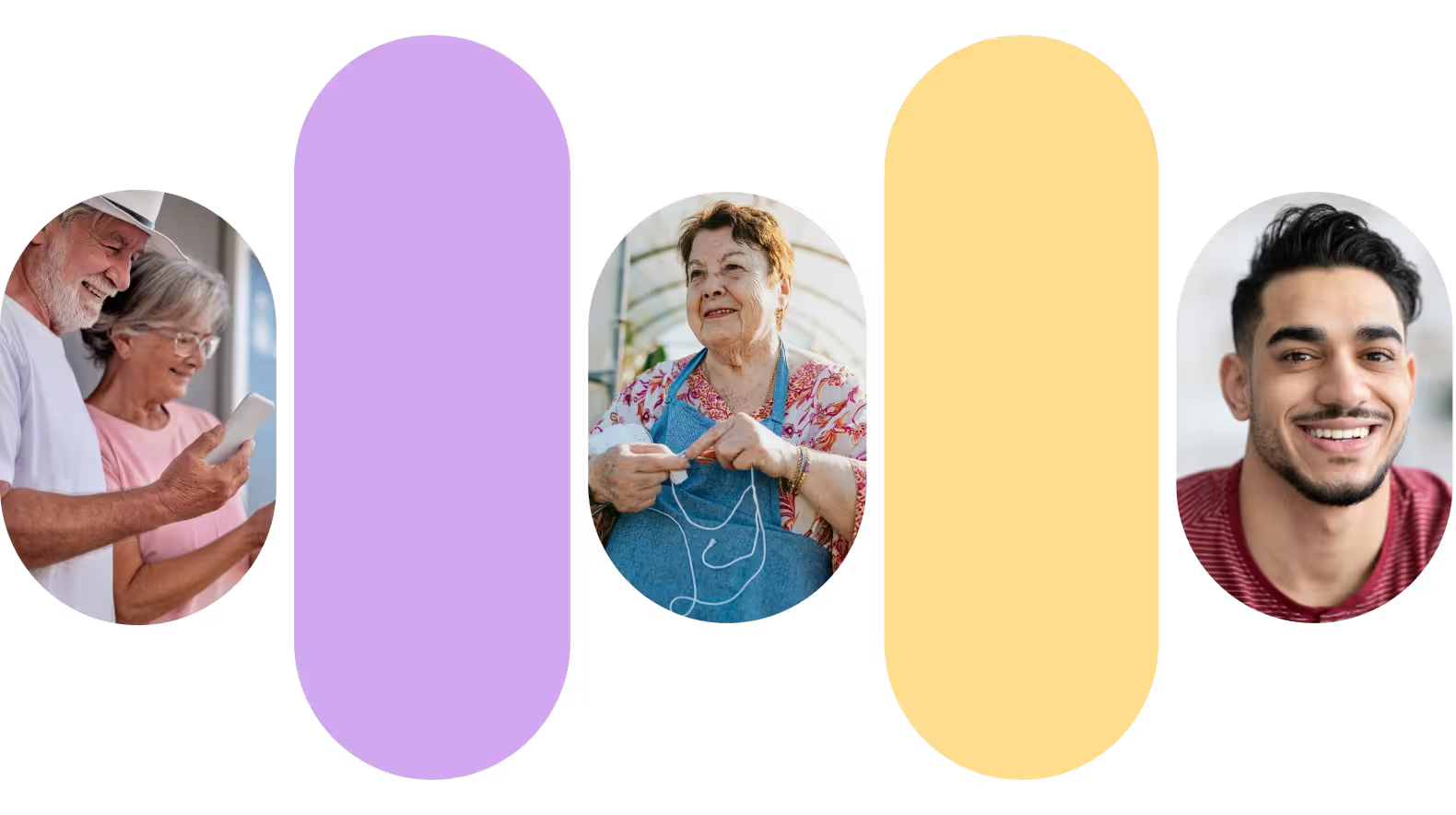Your Guide to Navigating Social Events with Hearing Loss
If you are worried that hearing loss will make your social events into a party full of concerns, you are in the right place. Read our guide!

Imagine being invited to a dinner party or a big family gathering. At first, you’re excited—but then the worries set in.
What if you can’t follow the conversation?
Will you need to keep asking people to repeat themselves?
How will you handle the noisy environment with all the overlapping chatter and background music?
These concerns can feel overwhelming, making it easy to convince yourself to skip the event entirely.
If this scenario feels familiar, you’re not alone.
Many people with hearing loss experience this kind of anxiety about social gatherings. But it doesn’t have to be this way. With a few thoughtful strategies and tools, these events can become less overwhelming—and even enjoyable.
Here are some practical tips to help you feel more at ease and confident when navigating social events:
1. Choose Your Seating Strategically
When attending a dinner or event, position yourself where you can maximize your ability to hear and participate.
- At Restaurants: Let the host know beforehand about your preference for a quieter spot, like a table away from loudspeakers or kitchen noise. If possible, sit with your back to the wall, which minimizes background noise behind you.
- At Family Gatherings: Sit next to people you’re comfortable with and who understand your situation. If conversations get too overwhelming, suggest smaller group chats.
2. Prepare in Advance
Think of it like checking out a restaurant menu before dining—you want to know what to expect so you can make informed choices. Preparing ahead of time for a social gathering can help you feel more confident and in control.
- If it’s a corporate event, review the guest list or agenda to identify who you’d like to connect with. This gives you the opportunity to focus your energy on meaningful conversations.
- For family gatherings, touch base with a trusted relative ahead of time and let them know you might need some extra support navigating group conversations.
3. Position Yourself for Success
Where you stand or sit can affect how well you hear others. Try to position yourself in areas with good lighting, so you can rely on visual cues like lip reading or facial expressions.
- In noisy environments, find a space where you can face the person you’re speaking to without too many distractions.
- If the venue has music playing, move to a quieter section. For example, at a wedding reception, you might find that stepping outside to chat with a friend gives you the quiet atmosphere needed for a meaningful exchange.
4. Use Nagish to Your Advantage
Nagish is a free app that provides real-time captions and uses live transcribe technology to assist in live conversations. With just a quick download, Nagish ensures every word is captured and displayed clearly on your device, helping you stay engaged and confident in any conversation.
If you use Bluetooth-enabled hearing aids or cochlear implants, you can pair them with Nagish for an even better experience. This integration lets you enjoy conversations more naturally, reducing the stress of trying to keep up and allowing you to focus on the moment.
In addition to Nagish, many modern hearing aids feature directional microphones and noise-reduction technology to help you focus on the person you’re speaking with, even in noisy environments. Together, these tools empower you to take control of social interactions and enjoy.
5. Be Open About Your Needs
It’s perfectly okay to let others know that you’re experiencing hearing loss and may need a bit of extra help.
- Practice simple phrases to explain your situation, such as: “I have some difficulty hearing in noisy environments; would you mind speaking a little slower?”
- Most people are happy to accommodate you if you communicate your needs calmly and confidently. For example, at a team meeting, asking a coworker to recap points directly to you instead of from across the table can make you feel included and engaged.
6. Don’t Hesitate to Take Breaks
Social events can be overwhelming, even without hearing challenges. Allow yourself to step away when you need to recharge.
- Take a moment to find a quiet spot to reset. A short break can help you return to the event feeling refreshed and ready to reengage.
7. Build a Support Network
Having a support system of friends, family, or colleagues who understand your needs can make all the difference.
For example, if you’re attending a large family dinner, ask a trusted family member to help by summarizing conversations you may have missed or gently redirecting the group’s attention if you’re speaking but the noise is too overwhelming.
If you’re going to an event with a partner, establish subtle, discreet signals to communicate when you need assistance or a break. For instance, a gentle tap on their arm might indicate that the background noise is too much, or a glance could signal that you’d like help steering the conversation to a quieter spot. These small, pre-arranged signals can help you navigate the situation smoothly without feeling the need to explain at the moment.
Final Thoughts
Social gatherings don’t have to feel overwhelming. Instead of focusing on what might go wrong, consider what could go right when you take small steps to engage.
Think of each interaction as an opportunity to advocate for your needs, embrace the support of loved ones, and use technology to your advantage.
If you’re just beginning to notice signs of hearing loss, know that adjusting takes time. Be patient with yourself, take small steps, and celebrate the moments when you feel connected and heard.
We hope this guide was helpful, and if you know someone who is experiencing difficulty navigating social events and gatherings with hearing loss, forward them these helpful tips.














